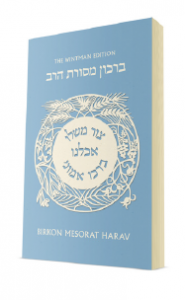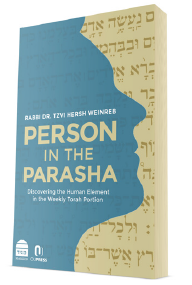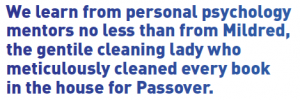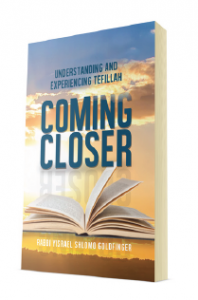New Books From OU Press
 The Mesorat HaRav Birkon—Wintman Edition
The Mesorat HaRav Birkon—Wintman Edition
Edited by Rabbi David Hellman
OU Press and Koren Publishers
With some measure of justice, we can apply the Gemara’s description of Rabban Yochanan ben Zakkai to Rabbi Joseph B. Soloveitchik, the Rav: “He did not leave unstudied Scripture, Mishnah, Gemara, halachah, Aggadah . . . great matters or small matters.” In fact, the Rav’s attention to the “small matters” was a defining characteristic of his greatness—he discovered the halachic as well as the philosophical meaning of many “mere customs” and seemingly minor practices. Thus, in some ways, the birkon—an often overlooked book of Jewish liturgy—represents an ideal vehicle for transmitting the Rav’s rich world of fundamental concepts and ideas.
The Mesorat HaRav Birkon is a unique work that provides a companion for Shabbat, yom tov, and other special occasions—such as the wedding, sheva berachot, and the brit milah ceremonies—as well as for the blessings recited every day. Rabbi David Hellman has skillfully assembled the Rav’s thought on these topics from a diverse collection of sources to form a running commentary on the birkon. The Mesorat HaRav Birkon also contains a section of reshimot (summaries) and hanhagot (personal customs), which record in-depth halachic explanations and the Rav’s personal practices, compiled in consultation with those who knew the Rav firsthand to ensure their accuracy. In addition, the Birkon includes three essays on the Rav’s conceptual understanding of Birkat Hamazon, zimmun and Kiddush—areas in which the Rav’s major contributions required a full-length treatment.
Following upon the success of the Mesorat HaRav volumes of the kinot, siddur and Chumash, the Mesorat HaRav Birkon will undoubtedly be received eagerly as another outstanding addition to the library of the Rav’s masterful works.
 Person in the Parasha: Discovering the Human Element in the Weekly Torah Portion
Person in the Parasha: Discovering the Human Element in the Weekly Torah Portion
By Rabbi Dr. Tzvi Hersh Weinreb
OU Press and Maggid Books
As many readers of these pages are already aware, Rabbi Dr. Tzvi Hersh Weinreb, OU executive vice president, emeritus, served both as a longtime community rabbi and as a trained therapist. The perspective resulting from this rare combination is the inspiration for this refreshingly original work on the weekly parashah. In a series of brief essays on each Torah portion, Rabbi Weinreb focuses on the psychological elements of the narrative—the personalities encountered in the Torah text, but also the personalities Rabbi Weinreb has encountered over his long career, who never fail to provide enlightening examples to drive the given point home.
 The highly readable essays in this volume, culled from Rabbi Weinreb’s weekly online parashah column, (available at www.ou.org), do not follow the familiar format of question-and-answer or focus on the finer points of textual analysis, but instead reflect on broader themes and personal experiences which lend themselves to further reflection. Rabbi Weinreb invokes a wide range of thinkers, well-known and otherwise, from both the Jewish and non-Jewish worlds, whose contributions help further our understanding. But perhaps the sharpest tool in his arsenal is the well-placed anecdote. We learn from personal psychology mentors no less than from Mildred, the gentile cleaning lady who meticulously cleaned every book in the house for Passover, uninstructed: “When I told Mildred that she really didn’t have to do that, she responded, ‘Rabbi! I am not going to allow a young upstart like you to tell me how to prepare for Passover. I learned about chametz from Rabbi Rosenkrantz, and he was old enough to have been your grandfather!’”
The highly readable essays in this volume, culled from Rabbi Weinreb’s weekly online parashah column, (available at www.ou.org), do not follow the familiar format of question-and-answer or focus on the finer points of textual analysis, but instead reflect on broader themes and personal experiences which lend themselves to further reflection. Rabbi Weinreb invokes a wide range of thinkers, well-known and otherwise, from both the Jewish and non-Jewish worlds, whose contributions help further our understanding. But perhaps the sharpest tool in his arsenal is the well-placed anecdote. We learn from personal psychology mentors no less than from Mildred, the gentile cleaning lady who meticulously cleaned every book in the house for Passover, uninstructed: “When I told Mildred that she really didn’t have to do that, she responded, ‘Rabbi! I am not going to allow a young upstart like you to tell me how to prepare for Passover. I learned about chametz from Rabbi Rosenkrantz, and he was old enough to have been your grandfather!’”
Rabbi Weinreb’s Person in the Parasha conveys a personal touch and adds a layer of psychological nuance to the study of the weekly parashah.
 Coming Closer: Understanding and Experiencing Tefillah
Coming Closer: Understanding and Experiencing Tefillah
By Rabbi Yisrael Shlomo Goldfinger
OU Press
In Coming Closer: Understanding and Experiencing Tefillah, Rabbi Yisrael Shlomo Goldfinger has developed a creative new conceptual framework for understanding our prayers based on the mystically inclined teachings of Nachmanides (Ramban), Rabbi Moshe Chaim Luzzatto (Ramchal) and others.
On the basis of the conceptual groundwork developed in the first part of the book, Rabbi Goldfinger is able to explain the ebb and flow of tefillah and how tefillah contains the ideal framework for the relationship between man and God. According to Rabbi Goldfinger, tefillah is organized to foster a relationship between God and His people. Subjecting the sequence and words of the prayers to close analysis, Rabbi Goldfinger uncovers patterns that convey closeness and distance, the attitude of a son and that of a servant, which characterize our relationship with the Almighty. With these tools, Rabbi Goldfinger explains the sequence of Pesukei de’Zimra, the blessings of the Shema, and the crescendo reached in the Amidah, in which we can attain closeness to our Creator.
 The book, written in an accessible style, simplifies what would otherwise remain abstruse concepts for the reader. Coming Closer succeeds in explicating the prayers in the siddur such that they can enable what they are intended to do, bringing us closer to God.
The book, written in an accessible style, simplifies what would otherwise remain abstruse concepts for the reader. Coming Closer succeeds in explicating the prayers in the siddur such that they can enable what they are intended to do, bringing us closer to God.
